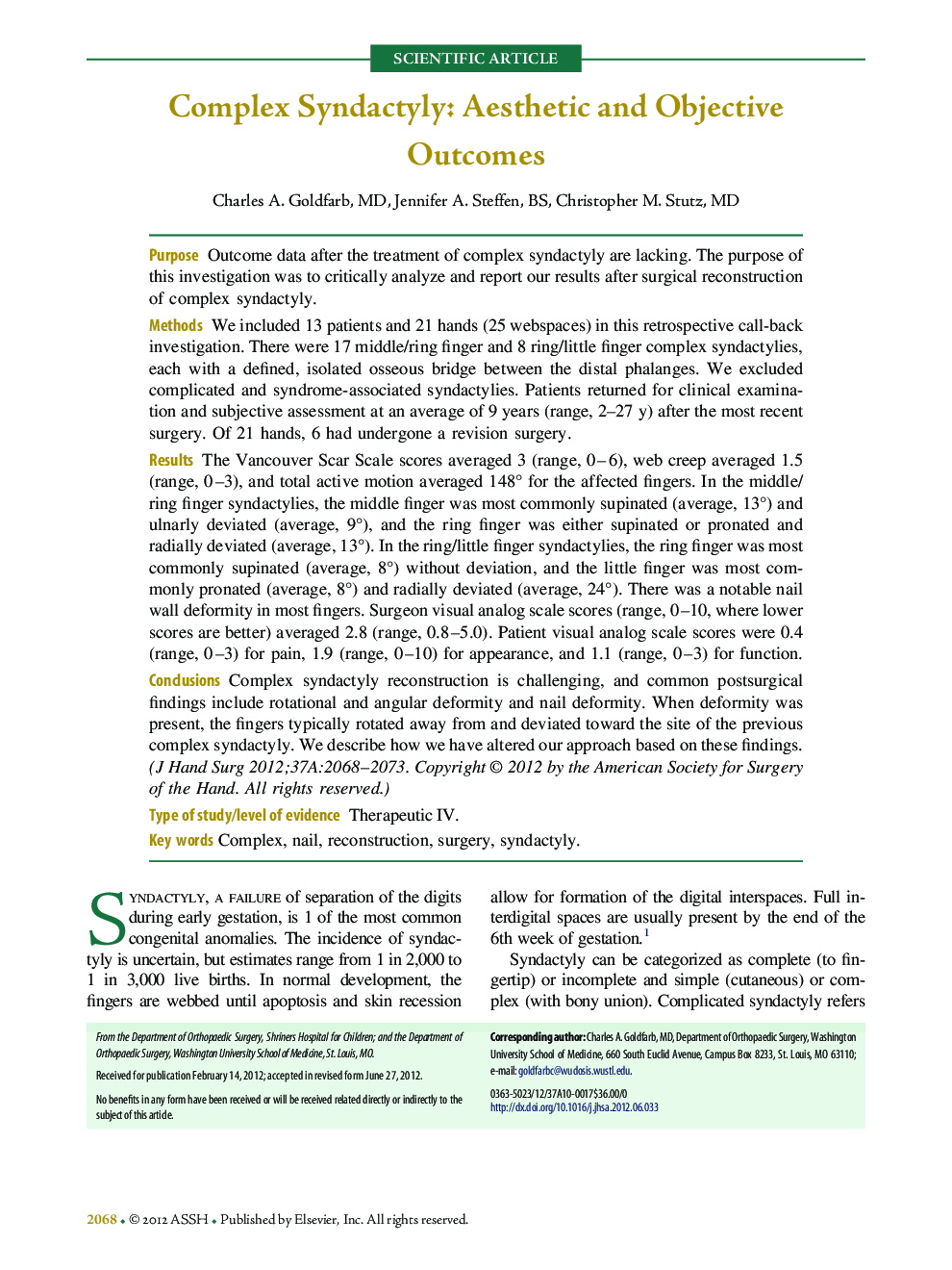| Article ID | Journal | Published Year | Pages | File Type |
|---|---|---|---|---|
| 4068643 | The Journal of Hand Surgery | 2012 | 6 Pages |
PurposeOutcome data after the treatment of complex syndactyly are lacking. The purpose of this investigation was to critically analyze and report our results after surgical reconstruction of complex syndactyly.MethodsWe included 13 patients and 21 hands (25 webspaces) in this retrospective call-back investigation. There were 17 middle/ring finger and 8 ring/little finger complex syndactylies, each with a defined, isolated osseous bridge between the distal phalanges. We excluded complicated and syndrome-associated syndactylies. Patients returned for clinical examination and subjective assessment at an average of 9 years (range, 2–27 y) after the most recent surgery. Of 21 hands, 6 had undergone a revision surgery.ResultsThe Vancouver Scar Scale scores averaged 3 (range, 0–6), web creep averaged 1.5 (range, 0–3), and total active motion averaged 148° for the affected fingers. In the middle/ring finger syndactylies, the middle finger was most commonly supinated (average, 13°) and ulnarly deviated (average, 9°), and the ring finger was either supinated or pronated and radially deviated (average, 13°). In the ring/little finger syndactylies, the ring finger was most commonly supinated (average, 8°) without deviation, and the little finger was most commonly pronated (average, 8°) and radially deviated (average, 24°). There was a notable nail wall deformity in most fingers. Surgeon visual analog scale scores (range, 0–10, where lower scores are better) averaged 2.8 (range, 0.8–5.0). Patient visual analog scale scores were 0.4 (range, 0–3) for pain, 1.9 (range, 0–10) for appearance, and 1.1 (range, 0–3) for function.ConclusionsComplex syndactyly reconstruction is challenging, and common postsurgical findings include rotational and angular deformity and nail deformity. When deformity was present, the fingers typically rotated away from and deviated toward the site of the previous complex syndactyly. We describe how we have altered our approach based on these findings.Type of study/level of evidenceTherapeutic IV.
